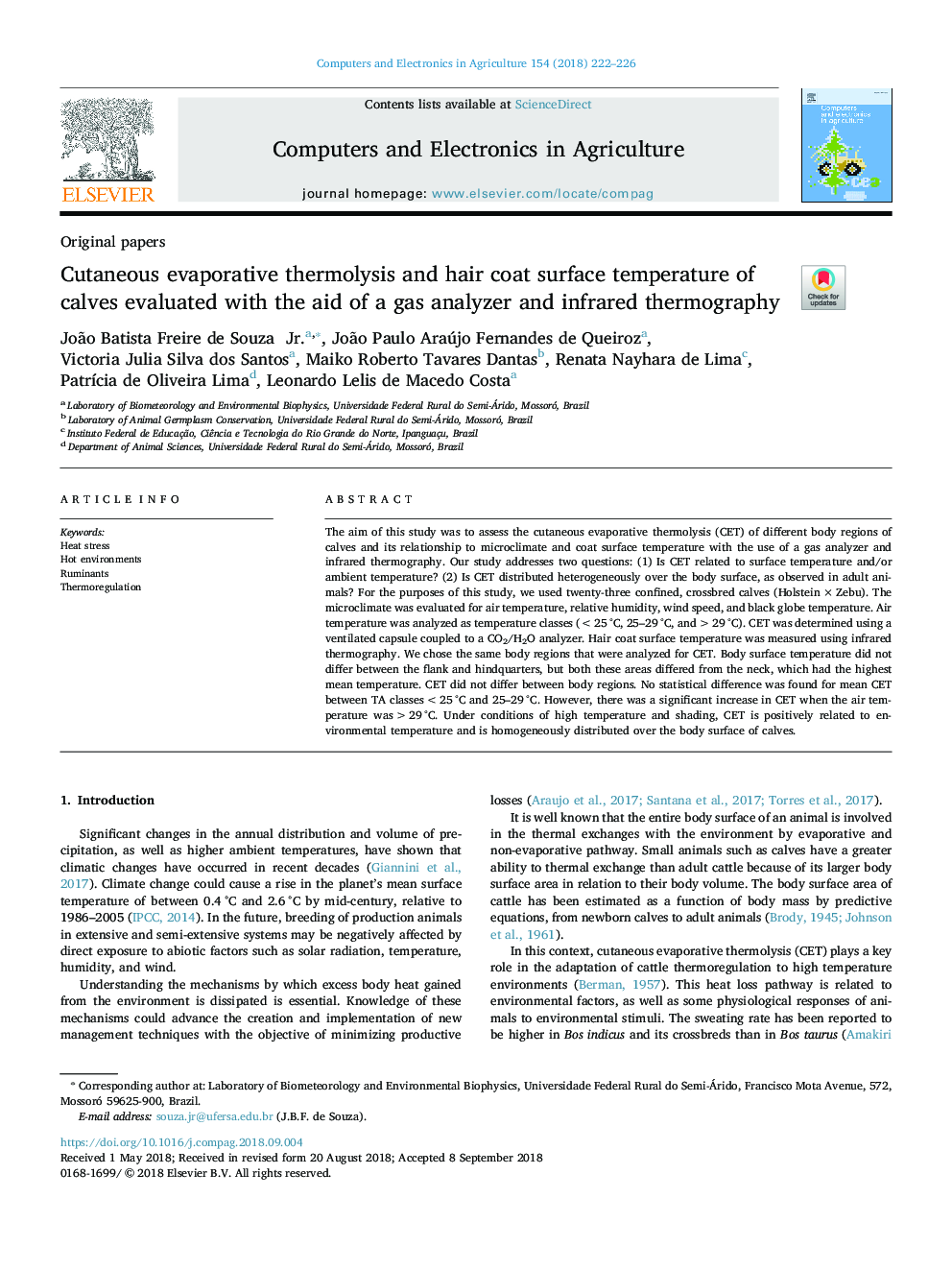| Article ID | Journal | Published Year | Pages | File Type |
|---|---|---|---|---|
| 10145149 | Computers and Electronics in Agriculture | 2018 | 5 Pages |
Abstract
The aim of this study was to assess the cutaneous evaporative thermolysis (CET) of different body regions of calves and its relationship to microclimate and coat surface temperature with the use of a gas analyzer and infrared thermography. Our study addresses two questions: (1) Is CET related to surface temperature and/or ambient temperature? (2) Is CET distributed heterogeneously over the body surface, as observed in adult animals? For the purposes of this study, we used twenty-three confined, crossbred calves (Holsteinâ¯Ãâ¯Zebu). The microclimate was evaluated for air temperature, relative humidity, wind speed, and black globe temperature. Air temperature was analyzed as temperature classes (<25â¯Â°C, 25-29â¯Â°C, and >29â¯Â°C). CET was determined using a ventilated capsule coupled to a CO2/H2O analyzer. Hair coat surface temperature was measured using infrared thermography. We chose the same body regions that were analyzed for CET. Body surface temperature did not differ between the flank and hindquarters, but both these areas differed from the neck, which had the highest mean temperature. CET did not differ between body regions. No statistical difference was found for mean CET between TA classes <25â¯Â°C and 25-29â¯Â°C. However, there was a significant increase in CET when the air temperature was >29â¯Â°C. Under conditions of high temperature and shading, CET is positively related to environmental temperature and is homogeneously distributed over the body surface of calves.
Keywords
Related Topics
Physical Sciences and Engineering
Computer Science
Computer Science Applications
Authors
João Batista Freire Jr., João Paulo Araújo Fernandes de Queiroz, Victoria Julia Silva dos Santos, Maiko Roberto Tavares Dantas, Renata Nayhara de Lima, PatrÃcia de Oliveira Lima, Leonardo Lelis de Macedo Costa,
